Click on an image for detailed information
Click on a column heading to sort in ascending or descending order

My
List |
Addition Date
|
Target
|
Mission
|
Instrument
|
Size
|

|
2011-04-08 |
|
Galaxy Evolution Explorer (GALEX)
|
|
3000x2000x3 |
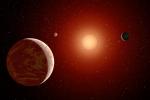
|
-
PIA13994:
-
Planets Under a Red Sun (Artist's Concept)
Full Resolution:
TIFF
(18 MB)
JPEG
(293.7 kB)
|

|
2011-04-21 |
|
Galaxy Evolution Explorer (GALEX)
|
Ultraviolet/Visible Camera
|
2004x1004x3 |
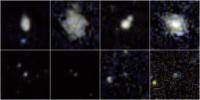
|
-
PIA14090:
-
Little Galaxies Pack a Big Punch
Full Resolution:
TIFF
(6.044 MB)
JPEG
(106.2 kB)
|

|
2011-05-19 |
|
Galaxy Evolution Explorer (GALEX)
|
|
4096x3072x3 |
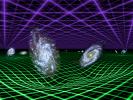
|
-
PIA14094:
-
Dark Energy and Gravity: Yin and Yang of the Universe (Artist's Concept)
Full Resolution:
TIFF
(37.75 MB)
JPEG
(1.858 MB)
|

|
2012-03-22 |
|
Galaxy Evolution Explorer (GALEX)
|
Ultraviolet/Visible Camera
|
6000x6000x3 |
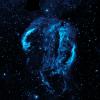
|
-
PIA15415:
-
Cygnus Loop Nebula
Full Resolution:
TIFF
(108 MB)
JPEG
(5.259 MB)
|

|
2012-05-02 |
|
Galaxy Evolution Explorer (GALEX)
|
|
900x950x3 |

|
-
PIA15620:
-
Black Hole Swallows a Star
Full Resolution:
TIFF
(2.568 MB)
JPEG
(109.1 kB)
|

|
2007-11-14 |
|
Galaxy Evolution Explorer (GALEX)
|
|
3000x2400x3 |
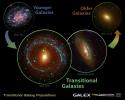
|
-
PIA15656:
-
Portrait of a Galaxy's Life
Full Resolution:
TIFF
(21.6 MB)
JPEG
(569.1 kB)
|

|
2012-05-16 |
M31
|
Galaxy Evolution Explorer (GALEX)
|
Ultraviolet/Visible Camera
|
9400x7000x3 |
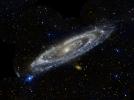
|
-
PIA15416:
-
Andromeda
Full Resolution:
TIFF
(197.4 MB)
JPEG
(6.751 MB)
|

|
2012-05-16 |
CW Leo
|
Galaxy Evolution Explorer (GALEX)
|
Ultraviolet/Visible Camera
|
8000x5000x3 |
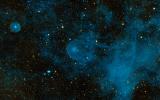
|
-
PIA15417:
-
CW Leo
Full Resolution:
TIFF
(120 MB)
JPEG
(8.366 MB)
|

|
2012-05-16 |
Helix Nebula
|
Galaxy Evolution Explorer (GALEX)
|
Ultraviolet/Visible Camera
|
2920x2920x3 |
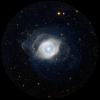
|
-
PIA15658:
-
NGC 7293, the Helix Nebula
Full Resolution:
TIFF
(25.58 MB)
JPEG
(884.6 kB)
|

|
2013-01-10 |
|
Galaxy Evolution Explorer (GALEX)
|
|
2500x1380x3 |
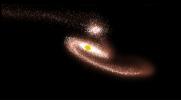
|
-
PIA16614:
-
Simulation of Galactic Collision (Simulation)
Full Resolution:
TIFF
(10.35 MB)
JPEG
(161.1 kB)
|

|
2013-06-28 |
|
Galaxy Evolution Explorer (GALEX)
|
GALEX Telescope
|
1500x1500x3 |
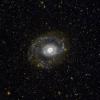
|
-
PIA17245:
-
Ultraviolet Ring of Stars
Full Resolution:
TIFF
(6.753 MB)
JPEG
(390.5 kB)
|

|
2013-06-28 |
|
Galaxy Evolution Explorer (GALEX)
|
GALEX Telescope
|
1650x1650x3 |
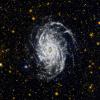
|
-
PIA17247:
-
Big Brother to the Milky Way
Full Resolution:
TIFF
(8.171 MB)
JPEG
(473.8 kB)
|

|
2013-06-28 |
|
Galaxy Evolution Explorer (GALEX)
|
GALEX Telescope
|
1500x1500x3 |
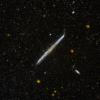
|
-
PIA17246:
-
Galaxy's Pencil-Thin Profile
Full Resolution:
TIFF
(6.753 MB)
JPEG
(377.7 kB)
|

|
2015-03-26 |
|
Galaxy Evolution Explorer (GALEX)
|
|
1600x900x3 |
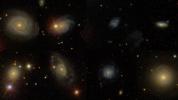
|
-
PIA18929:
-
After the Explosion: Investigating Supernova Sites
Full Resolution:
TIFF
(4.322 MB)
JPEG
(117.5 kB)
|

|
2016-07-11 |
|
Galaxy Evolution Explorer (GALEX)
|
SDSS
Very Large Array (VLA)
|
3858x2170x3 |
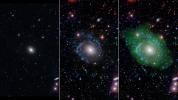
|
-
PIA20695:
-
Frankenstein Galaxy
Full Resolution:
TIFF
(18.72 MB)
JPEG
(1.023 MB)
|

|
2017-06-06 |
|
Galaxy Evolution Explorer (GALEX)
|
|
2200x1700x3 |
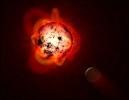
|
-
PIA21473:
-
Flaring Red Dwarf Star (Illustration)
Full Resolution:
TIFF
(4.931 MB)
JPEG
(202.8 kB)
|

|
2020-11-18 |
|
Galaxy Evolution Explorer (GALEX)
|
|
4791x2695x3 |
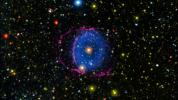
|
-
PIA23867:
-
The Blue Ring Nebula
Full Resolution:
TIFF
(26.12 MB)
JPEG
(761.9 kB)
|

|
2020-11-18 |
|
Galaxy Evolution Explorer (GALEX)
|
|
1920x1080x3 |
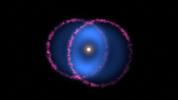
|
-
PIA23868:
-
Geometry of the Blue Ring Nebula (Animation)
Full Resolution:
TIFF
(2.374 MB)
JPEG
(66.08 kB)
|

|
2010-08-11 |
|
Galaxy Evolution Explorer (GALEX)
Hubble Space Telescope
|
Ultraviolet/Visible Camera
|
2400x1600x3 |
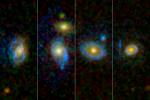
|
-
PIA13318:
-
Ultraviolet Ring Around the Galaxies
Full Resolution:
TIFF
(11.53 MB)
JPEG
(192.2 kB)
|

|
2006-01-11 |
Cartwheel Galaxy
|
Galaxy Evolution Explorer (GALEX)
Hubble Space Telescope
Spitzer Space Telescope
|
Chandra X-ray Telescope
GALEX Telescope
Infrared Array Camera (IRAC)
Visible Light
|
1500x1500x3 |
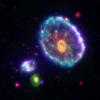
|
-
PIA03296:
-
A Stellar Ripple
Full Resolution:
TIFF
(6.762 MB)
JPEG
(201.2 kB)
|

|
2007-06-01 |
Messier 81
|
Galaxy Evolution Explorer (GALEX)
Hubble Space Telescope
Spitzer Space Telescope
|
GALEX Telescope
Infrared Array Camera (IRAC)
Visible Light
|
3180x2456x3 |

|
-
PIA09579:
-
M81 Galaxy is Pretty in Pink
Full Resolution:
TIFF
(23.43 MB)
JPEG
(1.061 MB)
|

|
2016-01-05 |
|
Galaxy Evolution Explorer (GALEX)
NuSTAR
|
GALEX Telescope
NuSTAR
|
6289x3538x3 |
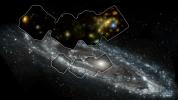
|
-
PIA20061:
-
Andromeda in High-Energy X-rays
Full Resolution:
TIFF
(41.67 MB)
JPEG
(2.214 MB)
|

|
2017-03-23 |
|
Galaxy Evolution Explorer (GALEX)
NuSTAR
|
GALEX Telescope
NuSTAR
|
2048x1152x3 |
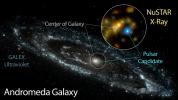
|
-
PIA20970:
-
Pulsar Candidate in Andromeda
Full Resolution:
TIFF
(3.973 MB)
JPEG
(291.9 kB)
|

|
2006-09-28 |
|
Galaxy Evolution Explorer (GALEX)
Spitzer Space Telescope
|
MIPS
Ultraviolet/Visible Camera
|
7430x2410x3 |

|
-
PIA08787:
-
Amazing Andromeda Galaxy
Full Resolution:
TIFF
(53.72 MB)
JPEG
(3.426 MB)
|

|
2007-01-16 |
|
Galaxy Evolution Explorer (GALEX)
Spitzer Space Telescope
|
IRAC
|
975x700x3 |
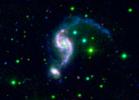
|
-
PIA09106:
-
Older Galaxy Pair Has Surprisingly Youthful Glow
Full Resolution:
TIFF
(2.051 MB)
JPEG
(55.51 kB)
|

|
2007-12-13 |
M51
|
Galaxy Evolution Explorer (GALEX)
Spitzer Space Telescope
|
IRAC
Ultraviolet/Visible Camera
|
1978x2850x3 |

|
-
PIA10200:
-
A Classic Beauty
Full Resolution:
TIFF
(16.93 MB)
JPEG
(526.5 kB)
|

|
2009-04-28 |
M33
|
Galaxy Evolution Explorer (GALEX)
Spitzer Space Telescope
|
Ultraviolet/Visible Camera
|
2228x3462x3 |

|
-
PIA11998:
-
NASA's Galaxy Mission Celebrates Sixth Anniversary
Full Resolution:
TIFF
(23.17 MB)
JPEG
(811.1 kB)
|

|
2009-04-28 |
M33
|
Galaxy Evolution Explorer (GALEX)
Spitzer Space Telescope
|
Ultraviolet/Visible Camera
|
2228x3462x3 |

|
-
PIA11999:
-
NASA's Galaxy Mission Celebrates Sixth Anniversary
Full Resolution:
TIFF
(23.17 MB)
JPEG
(1.039 MB)
|

|
2009-04-28 |
M33
|
Galaxy Evolution Explorer (GALEX)
Spitzer Space Telescope
|
Ultraviolet/Visible Camera
|
4402x4402x3 |
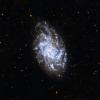
|
-
PIA12000:
-
NASA's Galaxy Mission Celebrates Sixth Anniversary
Full Resolution:
TIFF
(58.13 MB)
JPEG
(1.866 MB)
|

|
2011-05-25 |
|
Galaxy Evolution Explorer (GALEX)
Spitzer Space Telescope
|
IRAC
Ultraviolet/Visible Camera
|
2853x1903x3 |
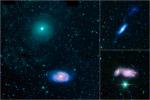
|
-
PIA14097:
-
Galactic Train Wrecks
Full Resolution:
TIFF
(16.29 MB)
JPEG
(537.9 kB)
|

|
2012-04-03 |
|
Galaxy Evolution Explorer (GALEX)
Spitzer Space Telescope
|
IRAC
Ultraviolet/Visible Camera
|
1130x1130x3 |
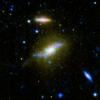
|
-
PIA15419:
-
The Beginning of the End of Star Formation
Full Resolution:
TIFF
(3.835 MB)
JPEG
(129 kB)
|

|
2012-10-03 |
|
Galaxy Evolution Explorer (GALEX)
Spitzer Space Telescope
|
IRAC
Ultraviolet/Visible Camera
|
6019x6019x3 |
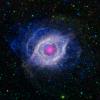
|
-
PIA15817:
-
The Helix Nebula: Unraveling at the Seams
Full Resolution:
TIFF
(108.7 MB)
JPEG
(3.087 MB)
|

|
2013-10-31 |
|
Galaxy Evolution Explorer (GALEX)
Wide-field Infrared Survey Explorer (WISE)
|
GALEX Telescope
WISE Telescope
|
1302x818x3 |
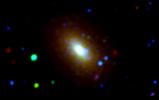
|
-
PIA17554:
-
Galaxies Grow from Inside Out
Full Resolution:
TIFF
(3.196 MB)
JPEG
(33.78 kB)
|

|
2009-10-02 |
|
Herschel Space Observatory
|
PACS
SPIRE
|
3403x3327x3 |
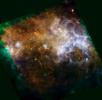
|
-
PIA12251:
-
Awash with Infrared Light
Full Resolution:
TIFF
(33.97 MB)
JPEG
(537.5 kB)
|

|
2009-10-02 |
|
Herschel Space Observatory
|
SPIRE
|
1266x1266x3 |
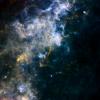
|
-
PIA12252:
-
Dark Wombs of Stars
Full Resolution:
TIFF
(4.814 MB)
JPEG
(115.8 kB)
|

|
2009-10-02 |
|
Herschel Space Observatory
|
SPIRE
|
3816x3689x3 |
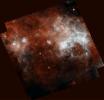
|
-
PIA12253:
-
Dark Star-Making Factory
Full Resolution:
TIFF
(42.23 MB)
JPEG
(526.4 kB)
|

|
2010-04-12 |
|
Herschel Space Observatory
|
PACS
SPIRE
|
783x598x3 |
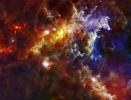
|
-
PIA13028:
-
Big Babies in the Rosette Nebula
Full Resolution:
TIFF
(1.407 MB)
JPEG
(56.69 kB)
|

|
2010-05-06 |
|
Herschel Space Observatory
|
PACS
SPIRE
|
2502x2560x3 |

|
-
PIA13100:
-
Assembly Line of Stars
Full Resolution:
TIFF
(19.24 MB)
JPEG
(524 kB)
|

|
2010-05-06 |
|
Herschel Space Observatory
|
PACS
SPIRE
|
2545x2906x3 |

|
-
PIA13101:
-
Bursting with Stars
Full Resolution:
TIFF
(22.21 MB)
JPEG
(417 kB)
|

|
2010-05-06 |
|
Herschel Space Observatory
|
PACS
SPIRE
|
2000x1997x3 |
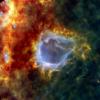
|
-
PIA13102:
-
Galactic Bubble
Full Resolution:
TIFF
(12 MB)
JPEG
(184.7 kB)
|

|
2010-05-11 |
|
Herschel Space Observatory
|
PACS
SPIRE
|
1315x1315x3 |
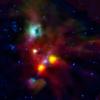
|
-
PIA13109:
-
Big Hole Revealed in Infrared
Full Resolution:
TIFF
(5.193 MB)
JPEG
(98.83 kB)
|

|
2010-09-01 |
|
Herschel Space Observatory
|
PACS
SPIRE
|
860x738x3 |
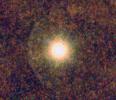
|
-
PIA13358:
-
Water Around a Carbon Star
Full Resolution:
TIFF
(1.906 MB)
JPEG
(96.61 kB)
|

|
2010-11-04 |
|
Herschel Space Observatory
|
Infrared Telescope
|
2868x1404x3 |
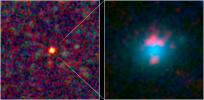
|
-
PIA13571:
-
Analyzing the Pieces of a Warped Galaxy
Full Resolution:
TIFF
(12.08 MB)
JPEG
(278.4 kB)
|

|
2011-01-05 |
|
Herschel Space Observatory
|
Infrared Telescope
|
3016x4106x3 |

|
-
PIA13771:
-
Andromeda is So Hot 'n' Cold
Full Resolution:
TIFF
(37.15 MB)
JPEG
(859.3 kB)
|

|
2011-02-17 |
|
Herschel Space Observatory
|
Infrared Telescope
|
2358x2358x3 |
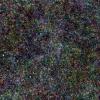
|
-
PIA13864:
-
Herschel's View of 'Lockman Hole'
Full Resolution:
TIFF
(16.7 MB)
JPEG
(1.012 MB)
|

|
2011-04-13 |
|
Herschel Space Observatory
|
Infrared Telescope
|
1735x1447x3 |
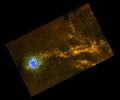
|
-
PIA14038:
-
Star-Studded Strings around Cocoon Nebula
Full Resolution:
TIFF
(7.543 MB)
JPEG
(112 kB)
|

|
2011-07-19 |
|
Herschel Space Observatory
|
PACS
SPIRE
|
2500x2500x3 |
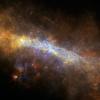
|
-
PIA14400:
-
The Case of the Warped Galactic Ring
Full Resolution:
TIFF
(18.77 MB)
JPEG
(251.5 kB)
|

|
2011-10-20 |
|
Herschel Space Observatory
|
|
3000x2400x3 |
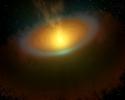
|
-
PIA14870:
-
Misty Star in the Sea Serpent (Artist's Concept)
Full Resolution:
TIFF
(21.6 MB)
JPEG
(258.7 kB)
|

|
2012-04-04 |
|
Herschel Space Observatory
|
PACS
SPIRE
|
934x956x3 |

|
-
PIA15421:
-
The Action-Packed Centaurus A
Full Resolution:
TIFF
(2.683 MB)
JPEG
(24.94 kB)
|

|
2012-04-04 |
|
Herschel Space Observatory
|
PACS
SPIRE
XMM-Newton
|
934x956x3 |

|
-
PIA15422:
-
Centaurus A All Prettied Up in Infrared and X-Rays
Full Resolution:
TIFF
(2.683 MB)
JPEG
(38.6 kB)
|

|
2012-04-12 |
|
Herschel Space Observatory
|
|
2360x2359x3 |
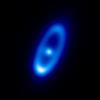
|
-
PIA15425:
-
Herschel Spots Comet Massacre Around Nearby Star
Full Resolution:
TIFF
(16.72 MB)
JPEG
(114.8 kB)
|

|
2012-05-11 |
Cygnus-X
|
Herschel Space Observatory
|
PACS
SPIRE
|
5897x2151x3 |
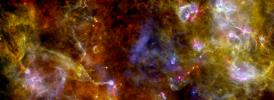
|
-
PIA15626:
-
Cygnus-X: The Cool Swan Glowing in Flight
Full Resolution:
TIFF
(38.05 MB)
JPEG
(963.3 kB)
|

|
2012-05-09 |
|
Herschel Space Observatory
|
|
4500x3600x3 |
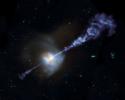
|
-
PIA15625:
-
Artist's Concept: Active Black Hole Squashes Star Formation
Full Resolution:
TIFF
(48.6 MB)
JPEG
(1.935 MB)
|

|
2012-05-17 |
|
Herschel Space Observatory
|
SPIRE
|
6898x3880x3 |
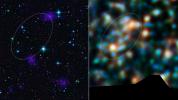
|
-
PIA15659:
-
A Star-Bursting Filament
Full Resolution:
TIFF
(80.29 MB)
JPEG
(2.074 MB)
|

|
2012-11-28 |
|
Herschel Space Observatory
|
Herschel Telescope
|
1000x699x3 |
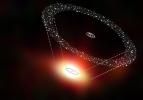
|
-
PIA16467:
-
A Vast Disk of Comets (Artist's Concept)
Full Resolution:
TIFF
(2.098 MB)
JPEG
(45.26 kB)
|

|
2013-01-09 |
|
Herschel Space Observatory
|
PACS
|
826x485x3 |
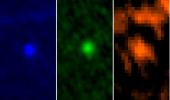
|
-
PIA16675:
-
Herschel's Three-Color View of Asteroid Apophis
Full Resolution:
TIFF
(1.202 MB)
JPEG
(25.73 kB)
|

|
2013-01-22 |
|
Herschel Space Observatory
|
PACS
|
625x643x3 |

|
-
PIA16680:
-
Betelgeuse's Enigmatic Environment
Full Resolution:
TIFF
(1.206 MB)
JPEG
(35.67 kB)
|

|
2013-01-28 |
M31
|
Herschel Space Observatory
|
SPIRE
|
2800x1575x3 |
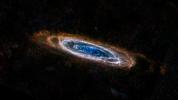
|
-
PIA16681:
-
Andromeda's Colorful Rings
Full Resolution:
TIFF
(13.24 MB)
JPEG
(368 kB)
|

|
2013-01-28 |
M31
|
Herschel Space Observatory
|
PACS
SPIRE
|
2711x2920x3 |

|
-
PIA16682:
-
Cool Andromeda
Full Resolution:
TIFF
(23.76 MB)
JPEG
(510 kB)
|

|
2013-05-07 |
|
Herschel Space Observatory
|
|
4096x2048x3 |
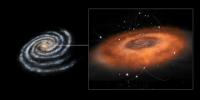
|
-
PIA17009:
-
Hustle and Bustle at Center of Milky Way
Full Resolution:
TIFF
(25.17 MB)
JPEG
(500.7 kB)
|

|
2013-03-05 |
Rosette Nebula
|
Herschel Space Observatory
|
PACS
SPIRE
|
4207x3822x3 |
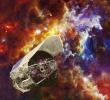
|
-
PIA16871:
-
Herschel's Cool Universe (Artist's Concept)
Full Resolution:
TIFF
(48.27 MB)
JPEG
(1.26 MB)
|

|
2013-03-19 |
|
Herschel Space Observatory
|
Herschel Telescope
|
3100x2260x3 |
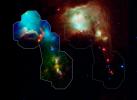
|
-
PIA16839:
-
Infant Stars Peek Out from Dusty Cradles
Full Resolution:
TIFF
(21.03 MB)
JPEG
(339.9 kB)
|

|
2013-03-29 |
|
Herschel Space Observatory
|
PACS
SPIRE
|
1500x1434x3 |

|
-
PIA16883:
-
Churning Out Stars
Full Resolution:
TIFF
(6.456 MB)
JPEG
(182.4 kB)
|

|
2013-04-17 |
|
Herschel Space Observatory
|
|
1280x1280x3 |
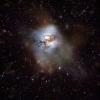
|
-
PIA16887:
-
Artist's Impression of Starburst Galaxy
Full Resolution:
TIFF
(4.917 MB)
JPEG
(211.9 kB)
|

|
2013-05-22 |
|
Herschel Space Observatory
|
|
1278x719x3 |
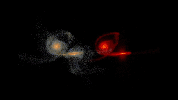
|
-
PIA17012:
-
Mega Galaxy Merger

Full Resolution:
TIFF
(2.758 MB)
JPEG
(43.5 kB)
|

|
2013-05-22 |
|
Herschel Space Observatory
|
|
2400x1500x3 |
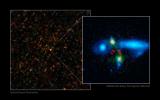
|
-
PIA17013:
-
The Making of a Giant Galaxy
Full Resolution:
TIFF
(10.8 MB)
JPEG
(211.3 kB)
|

|
2013-06-11 |
|
Herschel Space Observatory
|
|
4000x2250x3 |
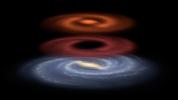
|
-
PIA17243:
-
Mapping Invisible Pools of Gas in Our Galaxy (Illustration)
Full Resolution:
TIFF
(27.01 MB)
JPEG
(379.7 kB)
|

|
2014-06-12 |
NGC 7538
|
Herschel Space Observatory
|
PACS
SPIRE
|
2305x1540x3 |
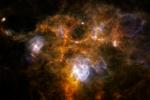
|
-
PIA18452:
-
A Puzzling Cosmic Ring
Full Resolution:
TIFF
(10.65 MB)
JPEG
(170.6 kB)
|

|
2014-10-15 |
|
Herschel Space Observatory
|
|
1560x1560x3 |
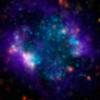
|
-
PIA18846:
-
Sluggish Galaxy Grows Stars Slowly
Full Resolution:
TIFF
(7.304 MB)
JPEG
(90.61 kB)
|

|
2015-05-28 |
|
Herschel Space Observatory
|
PACS
SPIRE
|
1323x1046x3 |
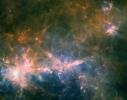
|
-
PIA19340:
-
Herschel's View of G49 Filament
Full Resolution:
TIFF
(4.153 MB)
JPEG
(95.89 kB)
|

|
2016-05-27 |
|
Herschel Space Observatory
|
PACS
SPIRE
|
2112x1452x3 |
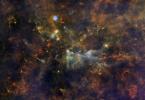
|
-
PIA13500:
-
The Little Fox and the Giant Stars
Full Resolution:
TIFF
(9.204 MB)
JPEG
(393.2 kB)
|

|
2016-10-12 |
Orion
|
Herschel Space Observatory
|
PACS
SPIRE
HIFI
|
5200x7400x3 |

|
-
PIA21073:
-
Ionized Carbon Atoms in Orion
Full Resolution:
TIFF
(80.59 MB)
JPEG
(1.376 MB)
|

|
2022-06-16 |
|
Herschel Space Observatory
|
|
13000x13000x3 |
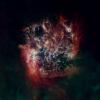
|
-
PIA25162:
-
Large Magellanic Cloud Imaged by Herschel, Planck, IRAS, COBE
Full Resolution:
TIFF
(291.7 MB)
JPEG
(6.089 MB)
|

|
2022-06-16 |
|
Herschel Space Observatory
|
|
7400x4162x3 |
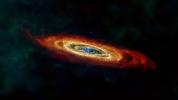
|
-
PIA25163:
-
Andromeda Galaxy Imaged by Herschel, Planck, IRAS, COBE
Full Resolution:
TIFF
(40.82 MB)
JPEG
(1.118 MB)
|

|
2022-06-16 |
|
Herschel Space Observatory
|
|
4950x4950x3 |
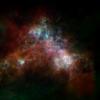
|
-
PIA25164:
-
Small Magellanic Cloud Imaged by Herschel, Planck, IRAS, COBE
Full Resolution:
TIFF
(54.26 MB)
JPEG
(1.546 MB)
|

|
2022-06-16 |
|
Herschel Space Observatory
|
|
2401x1350x3 |
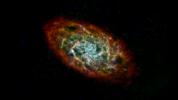
|
-
PIA25165:
-
Triangulum Galaxy Imaged by Herschel, Planck, IRAS, COBE
Full Resolution:
TIFF
(3.554 MB)
JPEG
(124.8 kB)
|

|
2013-12-12 |
|
Herschel Space Observatory
Hubble Space Telescope
|
PACS
WFPC2
|
3864x3864x3 |
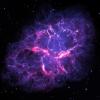
|
-
PIA17563:
-
Crab Nebula, as Seen by Herschel and Hubble
Full Resolution:
TIFF
(44.81 MB)
JPEG
(1.205 MB)
|

|
2014-04-29 |
|
Herschel Space Observatory
Hubble Space Telescope
|
HIFI
WFC3
|
1000x712x3 |
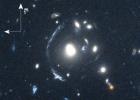
|
-
PIA18004:
-
Smeared and Magnified Galaxy
Full Resolution:
TIFF
(2.137 MB)
JPEG
(93.48 kB)
|

|
2011-08-01 |
|
Herschel Space Observatory
Spitzer Space Telescope
|
HIFI
IRAC
|
3000x2400x3 |
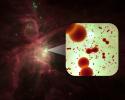
|
-
PIA14406:
-
Oxygen No Longer Lost in Space
Full Resolution:
TIFF
(21.6 MB)
JPEG
(276.5 kB)
|

|
2011-08-01 |
|
Herschel Space Observatory
Spitzer Space Telescope
|
HIFI
IRAC
|
3000x2400x3 |

|
-
PIA14407:
-
Oxygen in Orion
Full Resolution:
TIFF
(21.6 MB)
JPEG
(308.4 kB)
|

|
2012-01-10 |
|
Herschel Space Observatory
Spitzer Space Telescope
|
IRAC
SPIRE
PACS
|
15500x15500x3 |
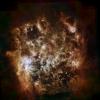
|
-
PIA15254:
-
Dusty Space Cloud
Full Resolution:
TIFF
(720.8 MB)
JPEG
(22.21 MB)
|

|
2012-01-10 |
|
Herschel Space Observatory
Spitzer Space Telescope
|
IRAC
SPIRE
PACS
|
10000x5000x3 |
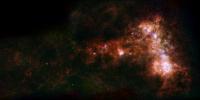
|
-
PIA15255:
-
A Dwarf Galaxy's Star Bar and Dusty Wing
Full Resolution:
TIFF
(150 MB)
JPEG
(6.56 MB)
|

|
2012-02-29 |
|
Herschel Space Observatory
Spitzer Space Telescope
|
Herschel Telescope
IRAC
|
2800x2880x3 |

|
-
PIA13959:
-
Orion's Rainbow of Infrared Light
Full Resolution:
TIFF
(24.19 MB)
JPEG
(321.2 kB)
|

|
2013-01-08 |
|
Herschel Space Observatory
Spitzer Space Telescope
|
|
4268x2400x3 |
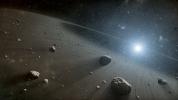
|
-
PIA16610:
-
Rocky Ring of Debris Around Vega (Artist Concept)
Full Resolution:
TIFF
(30.75 MB)
JPEG
(1.011 MB)
|

|
2022-11-22 |
Orion Nebula
|
Herschel Space Observatory
Spitzer Space Telescope
Wide-field Infrared Survey Explorer (WISE)
|
Herschel Telescope
Spitzer Space Telescope
WISE Telescope
|
9036x7646x3 |
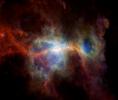
|
-
PIA25434:
-
Orion Nebula in Infrared
Full Resolution:
TIFF
(108.7 MB)
JPEG
(1.603 MB)
|

|
2012-01-18 |
|
Herschel Space Observatory
XMM-Newton
|
PACS
SPIRE
XMM-Newton X-ray
|
1352x1353x3 |
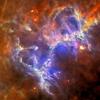
|
-
PIA15260:
-
Herschel Sees Through Ghostly Pillars
Full Resolution:
TIFF
(5.493 MB)
JPEG
(151 kB)
|

|
2012-11-14 |
|
Herschel Space Observatory
XMM-Newton
|
PACS
SPIRE
XMM-Newton X-ray
|
3234x2248x3 |
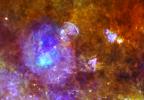
|
-
PIA16464:
-
Life and Death in a Star-Forming Cloud
Full Resolution:
TIFF
(21.82 MB)
JPEG
(446.7 kB)
|

|
1999-12-01 |
Doradus Nebula
|
Hubble Space Telescope
|
WFPC2
|
2508x1790x3 |
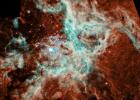
|
-
PIA04200:
-
Doradus Nebula
Full Resolution:
TIFF
(12.24 MB)
JPEG
(608.9 kB)
|

|
1999-12-02 |
Stephan's Quintet,NGC 7319, NGC 7318B, NGC 7318A
|
Hubble Space Telescope
|
WFPC2
|
2400x3000x3 |

|
-
PIA04201:
-
Stephan's Quintet
Full Resolution:
TIFF
(12.15 MB)
JPEG
(521 kB)
|

|
1999-12-01 |
Globular cluster M22
|
Hubble Space Telescope
|
WFPC2
|
514x600x3 |

|
-
PIA04202:
-
Globular Cluster M22
Full Resolution:
TIFF
(926.4 kB)
JPEG
(94.12 kB)
|

|
1999-12-02 |
Galaxy NGC 3079
|
Hubble Space Telescope
|
WFPC2
|
434x434x3 |
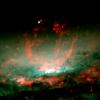
|
-
PIA04208:
-
Galaxy NGC 3079
Full Resolution:
TIFF
(305.3 kB)
JPEG
(22.15 kB)
|

|
1999-12-02 |
Galaxy NGC 3079
|
Hubble Space Telescope
|
WFPC2
|
2329x1845x3 |
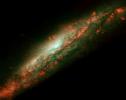
|
-
PIA04209:
-
Galaxy NGC 3079
Full Resolution:
TIFF
(5.519 MB)
JPEG
(351.2 kB)
|

|
1999-12-30 |
Edge-on Galaxy ESO 510 G13
|
Hubble Space Telescope
|
WFPC2
|
1435x732x3 |
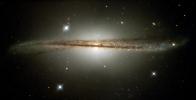
|
-
PIA04213:
-
Edge-on Galaxy
Full Resolution:
TIFF
(2.843 MB)
JPEG
(100.8 kB)
|

|
1999-12-01 |
mysterious object
|
Hubble Space Telescope
|
WFPC2
|
3000x2400x3 |
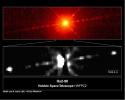
|
-
PIA04214:
-
Mysterious object He2-90
Full Resolution:
TIFF
(6.584 MB)
JPEG
(488.7 kB)
|

|
1999-12-01 |
Horsehead Nebula
|
Hubble Space Telescope
|
WFPC2
|
853x620x3 |
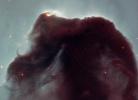
|
-
PIA04215:
-
Horsehead Nebula
Full Resolution:
TIFF
(1.405 MB)
JPEG
(48.75 kB)
|

|
1999-12-10 |
Ant nebula
|
Hubble Space Telescope
|
WFPC2
|
1072x708x3 |
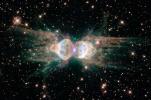
|
-
PIA04216:
-
Ant Nebula
Full Resolution:
TIFF
(2.008 MB)
JPEG
(143.4 kB)
|

|
1999-12-15 |
Galaxy NGC 4013
|
Hubble Space Telescope
|
WFPC2
|
1041x1018x3 |
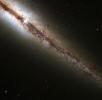
|
-
PIA04217:
-
Galaxy NGC 4013
Full Resolution:
TIFF
(2.811 MB)
JPEG
(74.83 kB)
|

|
1999-12-02 |
M82 Galaxy
|
Hubble Space Telescope
|
WFPC2
|
1487x1522x3 |

|
-
PIA04218:
-
Galaxy M82
Full Resolution:
TIFF
(5.39 MB)
JPEG
(187.4 kB)
|

|
1999-12-01 |
Galaxy NGC 1512
|
Hubble Space Telescope
|
WFPC2
Faint Object Camera
Near Infrared Camera
Multi-Object Spectrometer
|
600x650x3 |

|
-
PIA04219:
-
Galaxy NGC 1512
Full Resolution:
TIFF
(972.2 kB)
JPEG
(50.1 kB)
|

|
1999-12-03 |
Galaxy NGC 1850
|
Hubble Space Telescope
|
WFPC2
|
758x580x3 |
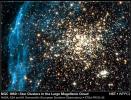
|
-
PIA04221:
-
Galaxy NGC 1850
Full Resolution:
TIFF
(1.321 MB)
JPEG
(140.6 kB)
|

















































































































